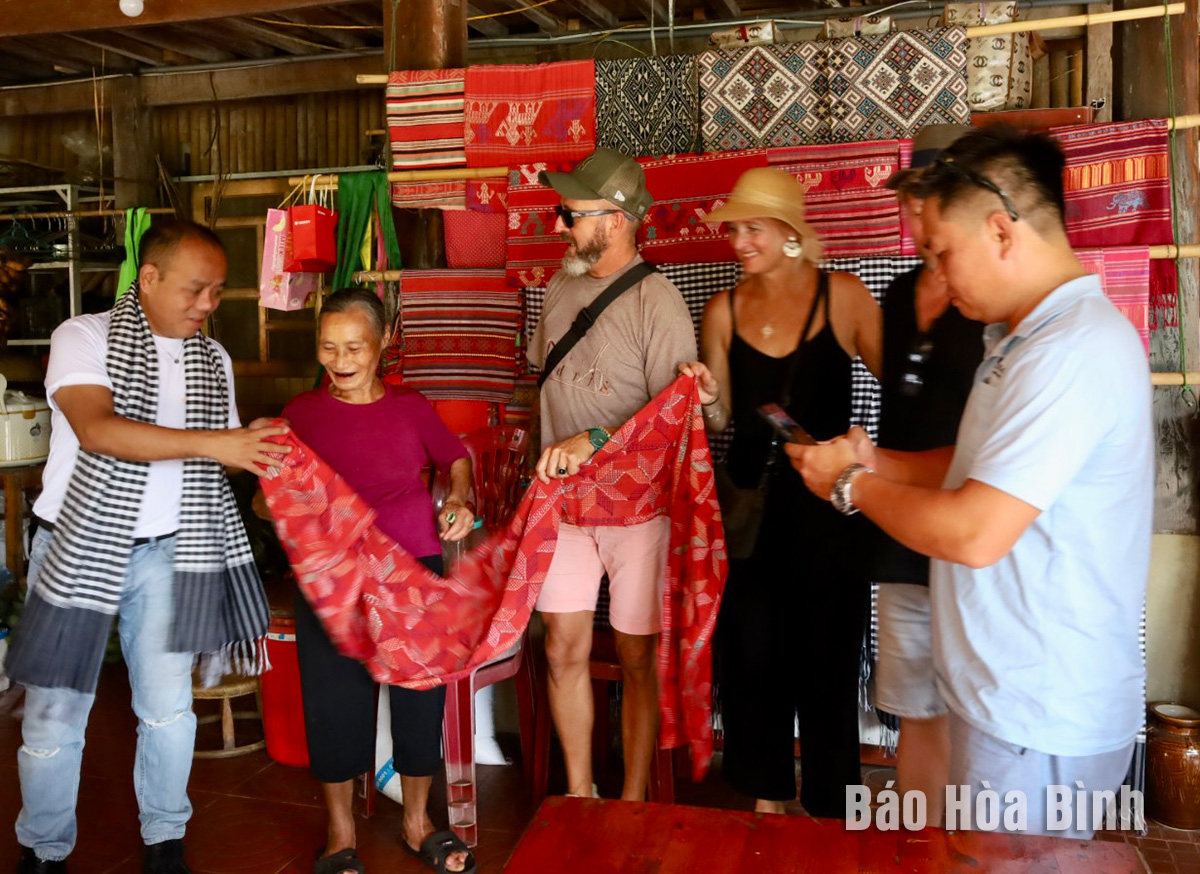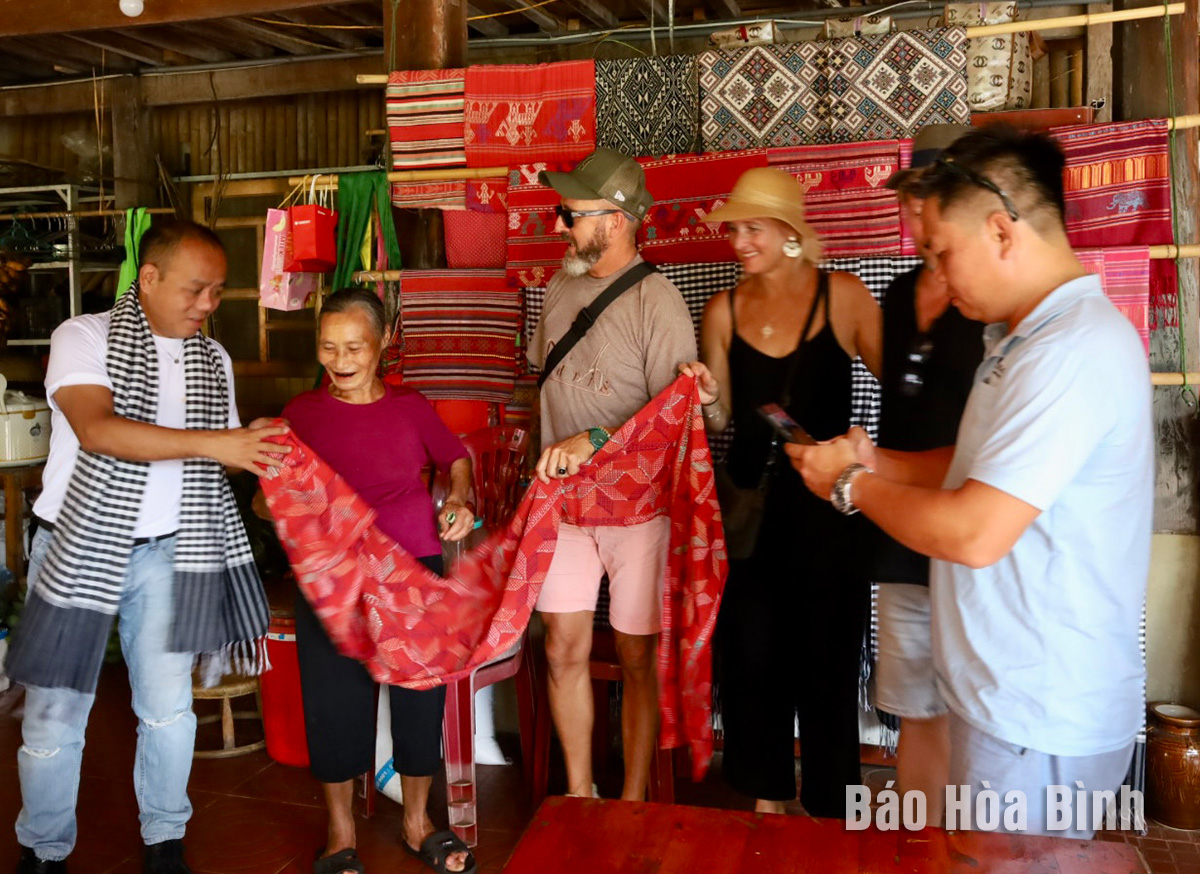



Locals still live in stilt houses but the house's structure has been modified to suit daily needs.
The women also wear traditional costumes with the signature white or black scarf regularly. Besides casual wear, the locals often save the two most beautiful sets of clothes for special occasions such as festivals, holidays, and cultural performances to welcome tourists. The ingenuity of Thai ethnic girls can be seen not only in their costumes but also in the image of them working at the loom to weave beautiful brocades.
Cultural preservation is associated with tourism development through community activities and traditional festivals such as "cau mua” , "xen ban, xen Muong","cha chieng", and "mung com moi” (Celebrating new rice), among others.
Ha Van Hoi, Vice Chairman of the People's Council of Chieng Chau commune, said that the new rice ceremony is a significant event of the local Thai ethic people as they believe that having a good harvest is partly due to the blessings of heaven, the earth and their ancestors, therefore after each harvest, families often hold a new rice offering ceremony to show their deep gratitude.
In order to preserve Thai writing as well as the ethnic cultural identity associated with the development of community tourism, every year the commune’s community learning centre opens Thai writing and training classes on community tourism. The initiative has helped to raise awareness about tourism industry and environmental protection among organisations and individuals doing tourism business, tourism services and residential communities.
Lac village has 125 households with over 500 people, of whom 98% are Thais. Previously, people relied on growing rice, farming and weaving brocade for a living. Later, the natural beauty and cultural space of the Thai people have attracted many domestic and international tourists, encouraging many to start tourism business.
Currently, the village has 74 households participating in tourism activities, the local people have proactively searched for markets and linked with travel agencies to promote tourism development in the locality.
According to Vice Chairman Hoi, in order to develop community tourism in Lac village, authorities at all levels have paid attention to the preservation of the ethnic culture, such as restoring festivals and traditional craft villages as well as cultural activities.
In addition to providing market information to locals, holding promotion activities, and building local tourism brands, Chieng Chau commune has continued to raise community awareness on preserving and promoting the local cultural identity, collecting and compiling documents introducing the customs of local communities and scenic spots in the area while reviving festivals of the Thai people along with art forms such as flute, Xoe dance, and bamboo dance, among others, in an attempt to promote the image of local culture and tourism to domestic and international tourists.